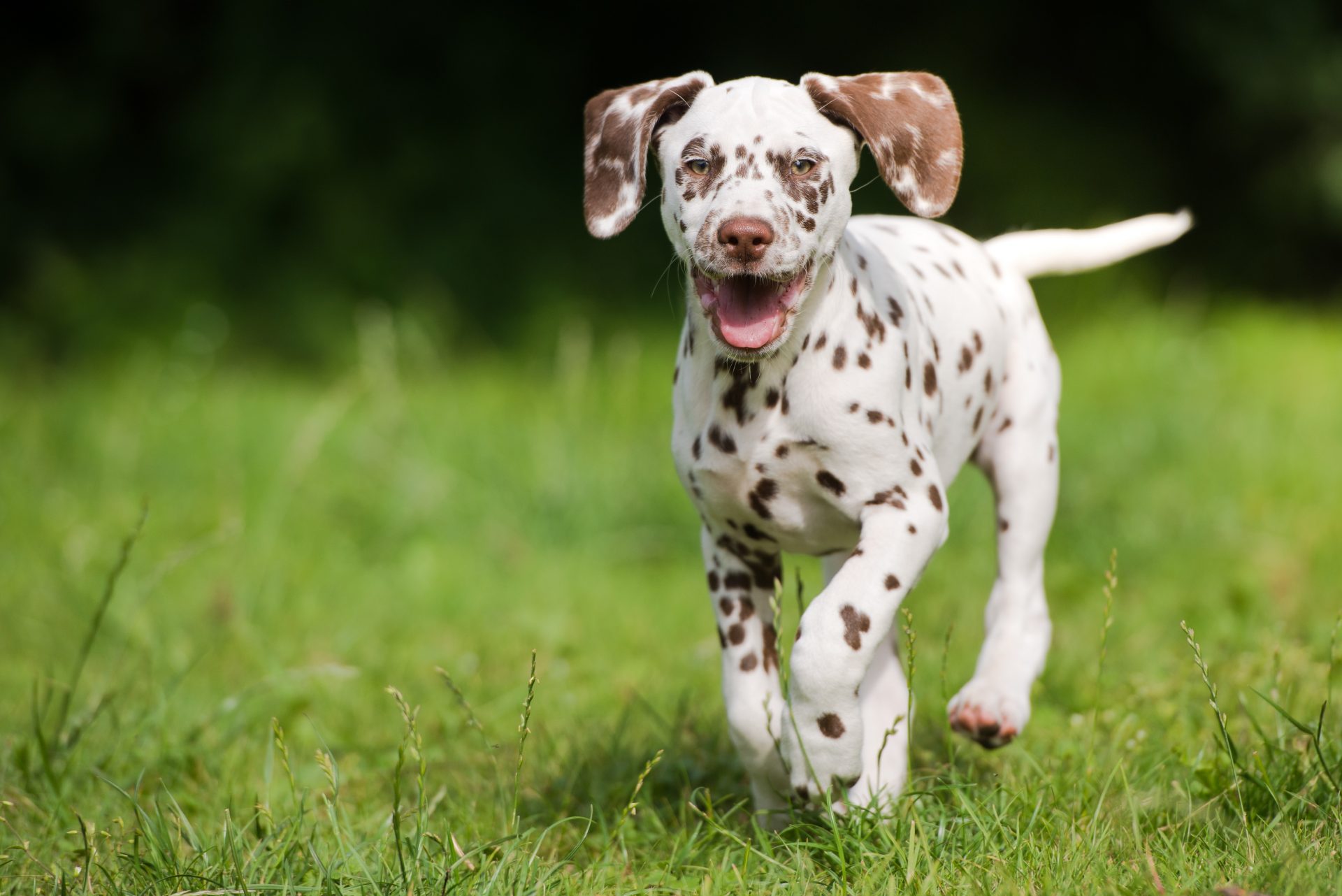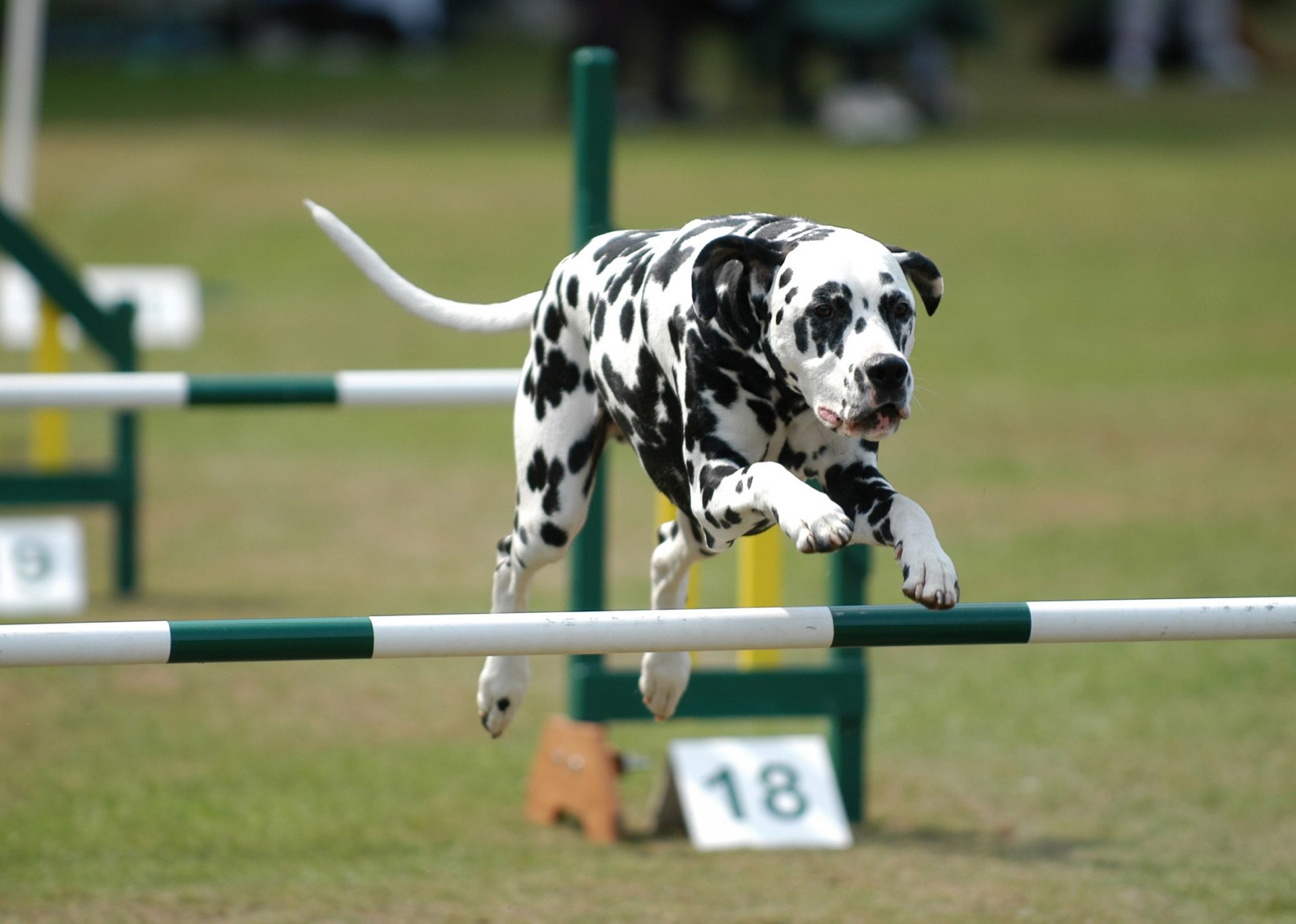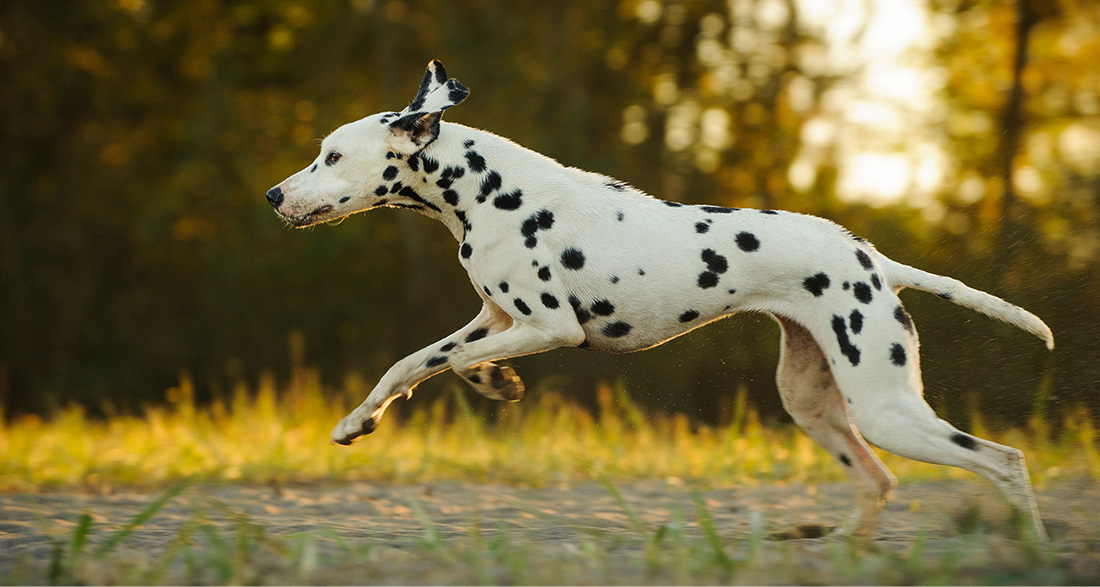Since the Disney classic “101 Dalmatians,” the Dalmatian with black spots has become one of the most well-known dog breeds. Here, you’ll learn what distinguishes these popular dogs and makes them so unique.
History of the Dalmatian
The origin of the Dalmatian is largely unclear, and there are numerous theories. In the past, there were various dog breeds exhibiting the specific white coloring with irregular black spots. Even on over 4000-year-old images in Egyptian pharaoh tombs, hunting dogs resembling the Dalmatian are depicted. However, these dogs may not necessarily have been direct ancestors of the Dalmatian. The origin of the breed’s name is also unclear, but it is likely derived from the eponymous region in Croatia.
Use of the Breed:
The exact origin of the breed has been confirmed only since the late Middle Ages. Especially among the English nobility, these beautiful dogs were highly sought after at the time. They were trained to run long distances alongside carriages and to look good. They were also specialized in rat hunting in stables and firehouses. In the 19th century, Dalmatians in the United States were given a new task.
They acted as “living sirens” for fire carriages by running ahead of the wagon and barking to clear the road. The breed is therefore still considered the mascot of the American fire department. In 1890, a uniform standard was first established, and the Dalmatian was recognized as a breed. It belongs to the sixth FCI group (Scenthounds and related breeds). In this group, the “patterned” dog is assigned to section 3, i.e., the related breeds.
Breed Overview
GROUP: Non-sporting
HEIGHT: 19 to 24 inches tall
WEIGHT: 45 to 65 pounds
COAT: Short
COAT COLOR: White with black or liver spots
LIFE SPAN: 11 to 13 years
TEMPERAMENT: Outgoing, friendly, intelligent, active, energetic, sensitive, playful
HYPOALLERGENIC: No
ORIGIN: Possibly Dalmatia/Croatia or England
Traits and Characteristics
The Dalmatian is a friendly and affectionate dog full of energy and enthusiasm. It is an intelligent, adaptable dog that requires a lot of love and reacts very sensitively to stress. When given enough exercise and affection, it has the potential to become a beloved family pet. However, it is not suitable for novice owners. The breed is very attentive and eager to learn but requires gentle training without any coercion. Dalmatians are often sensitive and can quickly become nervous or excitable.
Occasionally, the Dalmatian can be somewhat stubborn and may want to assert its own will. Some representatives of the breed also show a slight hunting instinct, which can be easily managed with proper training. They behave neutrally towards strangers and protect their family without any aggression. If accustomed to it from an early age, the Dalmatian also gets along great with other pets.
| Affection Level | High |
| Friendliness | High |
| Kid-Friendly | Medium |
| Pet-Friendly | Medium |
| Exercise Needs | High |
| Playfulness | High |
| Energy Level | High |
| Trainability | Medium |
| Intelligence | High |
| Tendency to Bark | Low |
| Amount of Shedding | High |
What to Look for When Buying?
A Dalmatian needs to be challenged and appropriately engaged throughout its life for both of you to be happy. If you want a laid-back dog, the Dalmatian is definitely not the right choice for you. So, be prepared to commit to an active dog for its lifespan of 10 to 13 years. With a size of up to 62 cm, the dogs are quite large and therefore do not feel comfortable in a small city apartment. The purchase price of a Dalmatian can vary greatly depending on where you buy the dog. For a puppy from a reputable breeder, expect a price range of $1800 – $2200.
Choosing the Right Puppy:
Only buy your Dalmatian puppy from reputable breeders who breed demonstrably healthy and well-socialized puppies. Do thorough research and ensure that the breeder has all the necessary papers and health checks for the parent animals. Each Dalmatian has a unique personality. Meet the puppies and observe their behavior to find out which one best suits you and your lifestyle. Look for signs of friendliness, curiosity, and playfulness. Ask the breeder about the health checks performed on the parent animals. Make sure the parent animals are free from genetic hereditary diseases that can occur in Dalmatians.
If you adopt a dog from a shelter or rescue an adult dog in need, it will be considerably cheaper. However, you should already have some experience with dogs, as some of these dogs may require special treatment.

Puppy Development
A Dalmatian puppy is born entirely white, without its typical dark spots. The distinctive spots begin to appear at 10 to 14 days old, and the spotting stops changing at about one year of age. At around six to ten months of age, a pubertal phase sets in, during which both female and male dogs reach sexual maturity. In this phase, young dogs are in the so-called adolescent stage and tend to be disobedient. Therefore, it is advisable to teach the puppy basic commands beforehand.
Dog Training:
Since the Dalmatian is an extremely attentive and intelligent dog, it notices any inconsistency in training. To prevent the little puppy from outsmarting you, you should be consistent. However, if you approach your Dalmatian with aggressive or too harsh training, it will resist and become stubborn. With ample praise and positive reinforcement, you will achieve much more with them. Therefore, a friendly but strict training approach, such as clicker training, is best suited.
Activities with the Dalmatian
These athletic dogs were bred as running dogs and, therefore, need a lot of exercise. They particularly enjoy daily extended walks and occasional longer outings for jogging, cycling, or horseback riding. The Dalmatian is an enduring runner but is also easily excited about small games. Regular mental stimulation is also a must for this intelligent breed. They enthusiastically learn small tricks and love search games. The Dalmatian feels most comfortable in an active and sporty family where someone can always engage with them. You can also delight them with regular visits to a lake for swimming. To let them really burn off energy, it is also recommended to engage in regular dog sports. The dogs are particularly quick to get excited about activities like dog dancing, agility, and obedience.
Health and Hereditary Diseases
Your Dalmatian’s health is of the utmost importance. There are certain hereditary diseases that can occur in this breed, and it is important to be aware of them. Here are some of the most common health problems that can occur in Dalmatians:
Urinary Stones: Dalmatians are predisposed to urinary stones due to a genetic defect in their uric acid metabolism. A balanced diet with specific foods that control urine pH can help prevent the formation of urinary stones.
Deafness: Dalmatians can suffer from deafness due to a gene associated with the white coat color. It is important to have your Dalmatian examined by a veterinarian for deafness, especially if he or she shows signs of deafness as a puppy.
Skin Problems: Some Dalmatians may suffer from skin conditions such as allergies, dermatitis, or sunburn. Regular brushing, the use of sunscreen, and avoiding potentially irritating substances can help minimize these problems.
Dalmatian Care
Dalmatians have short, dense fur that requires regular brushing to remove loose hair and promote coat health. Brushing once a week is usually sufficient unless your Dalmatians are shedding more than usual. Dalmatians are known for their characteristic white coat with black spots. To keep their coat clean and shiny, it is important to bathe them regularly. Use mild, skin-friendly shampoos specifically developed for dogs. Don’t forget about nail care! Regularly trim your Dalmatians’ nails to prevent overgrowth. It is advisable to have this done by a veterinarian or professional dog groomer to avoid injuries.

Interesting and Fascinating Facts about Dalmatians
Dalmatians in Film and Television:
The breed experienced a true boom after the release of the Disney film “101 Dalmatians” in 1961. The film tells the story of Dalmatian parents Pongo and Perdita, whose puppies were kidnapped by the villain Cruella De Vil. With the support of all the dogs in the neighborhood, and later the entire country, Pongo and Perdita search for and rescue their kidnapped puppies. In doing so, they not only save their own but a total of 99 puppies from Cruella’s clutches. The film is described by critics as a “humorous Disney animated film full of delightful gags, offering timeless cheerful entertainment.”
Did You Know?
- To maintain the tradition of carriage dogs, the Budweiser brewery still uses Dalmatians to accompany their Clydesdale carriages today. Their current dogs are named Chip, Brewer, and Clyde.
- Also, the first American President George Washington was a big fan of the breed. He owned a female named Madame Moose, who can be seen in many drawings by his side.
- A funny characteristic of Dalmatians is that they display pronounced facial expressions, often bringing a smile to their owners’ faces. Particularly during greetings, Dalmatians slightly lower their heads and pull back their lips to reveal their teeth. However, this expression should not be confused with snarling: Your Dalmatian is simply smiling.
Do you also have a Dalmatian or plan to get one soon? Tell me in the comments what makes them so special!


